We all need to excrete our metabolic waste products on a regular basis, but it is the where and the how that has the biggest impact on our well-being.
From open defecation and pit latrines to the modern “flush, discharge and forget” waterborne systems, the way that we approach one of civilizations earliest logistical challenges ranges from convenient, hygienic, and dignified, to downright dangerous for people and the environment on which we depend.
Unfortunately, when we think of pit latrines in South Africa, we think of schools.
According to a recent debate hosted by the Toilet Board Coalition, “Sanitation in schools is regressing. Every day, hidden from sight, toilets for schoolchildren get worse. In 2016, 66% of schools had basic sanitation; by 2019 that dropped to 63%. There is a five-fold increase in the pace of activity needed to achieve total sanitation in schools by 2030. Without support, innovation and engagement from the private sector this just won’t happen.”
Sadly, the lack of basic sanitation in schools also compounds the phenomenon of Period Poverty amongst schoolgirls who end up missing out on approximately 25% of their education from the time that they begin menstruating.

In 2012 the World Health Organization estimated that the global economic return on sanitation is about USD 5.50 for every USD 1.00 invested, much more than the USD 2.00 economic return on water.
It cannot be denied that investing in school sanitation is good for children’s futures and for business.
However, after billions of dollars have been channeled into reinventing the toilet, we realise that the toilet is not the issue.
Whether you have a state-of-the-art flush system or a well-constructed pit latrine, if the other links in the sanitation chain are not maintained (or non-existent), not only will it pollute the environment at some point, but it will also have a negative effect on the dignity of the user. Any system must follow through with safe and sustainable waste management otherwise all you are doing is flushing the problem further down the line.
The fact that Cape Town’s marine outfalls release 55 million liters of untreated* effluent every day into the ocean is not because of a toilet that doesn’t work properly, it is indicative of a greater system that is failing.
And it’s not just in the developing, third world.

Even in Europe, with all the resources and technology, sewerage treatment plants struggle to manage and deal with fecal sludge. Even to the extent that Sweden carts millions of cubic tons of it on trains for thousands of kilometres to the disused mine shafts of the north where it gets dumped and forgotten, by most.
For the past 200 years, the “gold standard” waste management service is a waterborne infrastructure of sewers and centralized treatment plants. This system is considered to be the greatest medical advance in human history, upstaging even antibiotics and vaccines, but there are significant losses along the value chain, not least of which being that the standard operating procedure for wastewater treatment is still to discharge the “treated (*screened) effluent” into nearby bodies of water to be absorbed by the natural processes.
As populations grow and more effluent is discharged, even if it were to be correctly treated, the PPM levels rise until the natural systems can no longer cope with the imbalance.
The reality is that there are far more Wastewater Treatment Plants that do not work properly, if at all, and this is causing havoc for rivers, lakes and coastlines, as well as communities, around the world.
Wastewater Treatment Plants are also reported to use a huge amount of electricity. For many municipal governments, drinking water and wastewater plants are typically the largest energy consumers and account for 30 to 40% of total energy consumed.
And one cannot mention drinking water without acknowledging that the developed world’s current, aspirational sanitation system exploits precious water that we can ill afford to waste, to transport our sh*t.
The practice of building sanitation infrastructure while not allowing for adequate maintenance in the future, nor considering climate change, rising energy costs and potential water shortages, has been – and still is – very short sighted.
In South Africa, and across the African continent, we do not have the luxury of abundant water supply, energy nor capital to fund the building and maintenance of infrastructure, no matter how hard we wish for it.
There is need to transform how people view human excreta and sanitation processes, particularly the view that waterborne sanitation is the best solution, regardless of water availability.
We must be realistic and find other ways so that we build climate resilient communities who are ready for the future.
It is essential to understand that sewered systems may be applicable to some situations, locations and communities, but definitely not in all. We need to be context sensitive, there is no silver bullet in the world of sanitation.
Globally, there is a dire need for a new class of advanced non-sewered sanitation systems (NSSS) that is capable of meeting stringent discharge or reuse criteria. These systems need to be simple to operate and maintain, reliable, and resilient to unreliable electrical service.
Perhaps it’s time to look back and bring some of the old ways to our future, not only in the field of sanitation but in many of the facets of modern living where we have abandoned the wisdom of our ancestors in the name of progress? Perhaps to survive and evolve, our species needs to revolve.
The TedX movie with Francois De La Royes
https://www.youtube.com/watch?v=CdZJ0SMbh10



